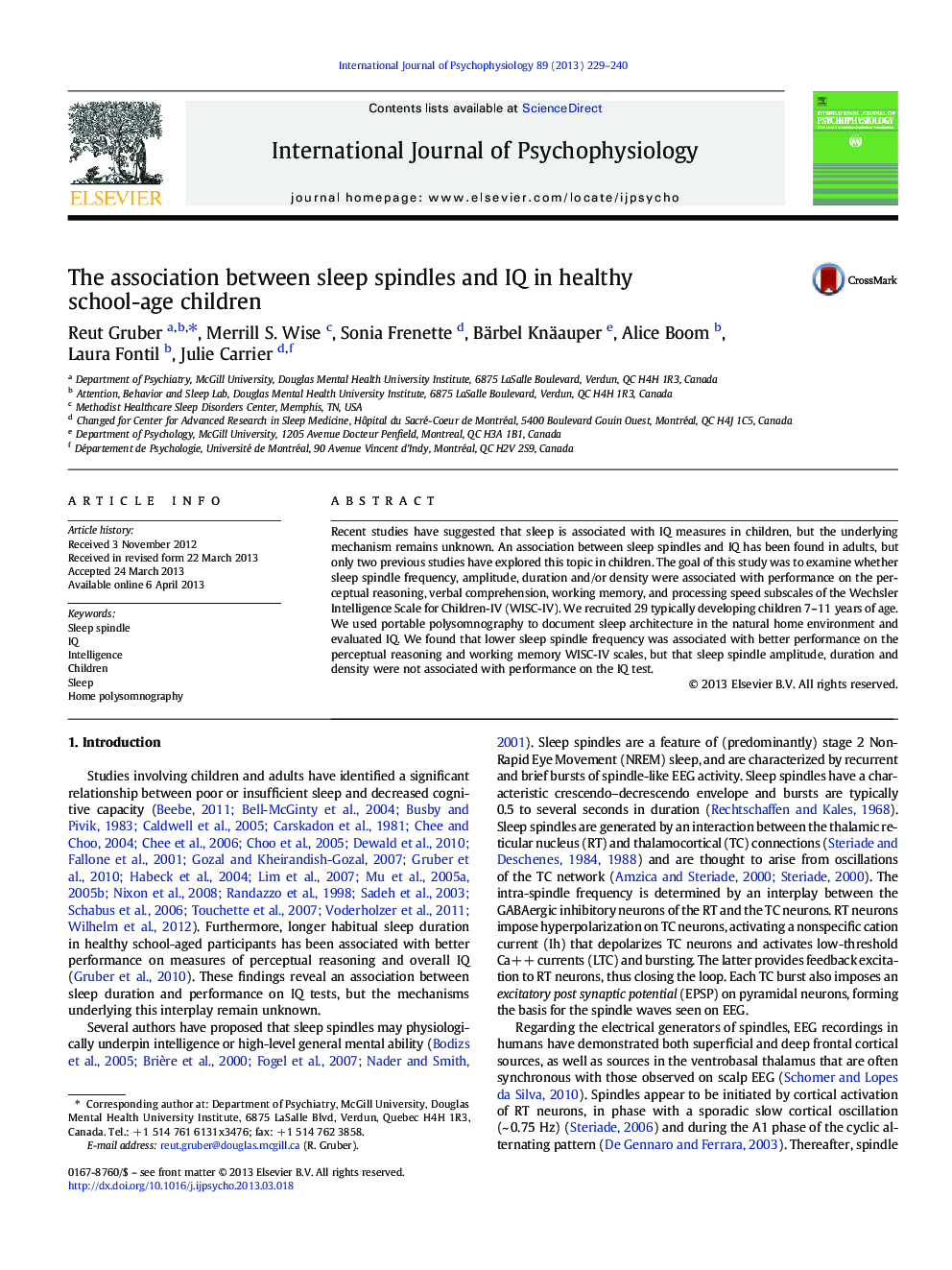| Article ID | Journal | Published Year | Pages | File Type |
|---|---|---|---|---|
| 930387 | International Journal of Psychophysiology | 2013 | 12 Pages |
•Spindle frequency was inversely associated with WISC-IV working memory score.•Spindle frequency was inversely associated with WISC-IV perceptual reasoning score.•No significant association between spindle density, duration, or amplitude and IQ
Recent studies have suggested that sleep is associated with IQ measures in children, but the underlying mechanism remains unknown. An association between sleep spindles and IQ has been found in adults, but only two previous studies have explored this topic in children. The goal of this study was to examine whether sleep spindle frequency, amplitude, duration and/or density were associated with performance on the perceptual reasoning, verbal comprehension, working memory, and processing speed subscales of the Wechsler Intelligence Scale for Children-IV (WISC-IV). We recruited 29 typically developing children 7–11 years of age. We used portable polysomnography to document sleep architecture in the natural home environment and evaluated IQ. We found that lower sleep spindle frequency was associated with better performance on the perceptual reasoning and working memory WISC-IV scales, but that sleep spindle amplitude, duration and density were not associated with performance on the IQ test.
